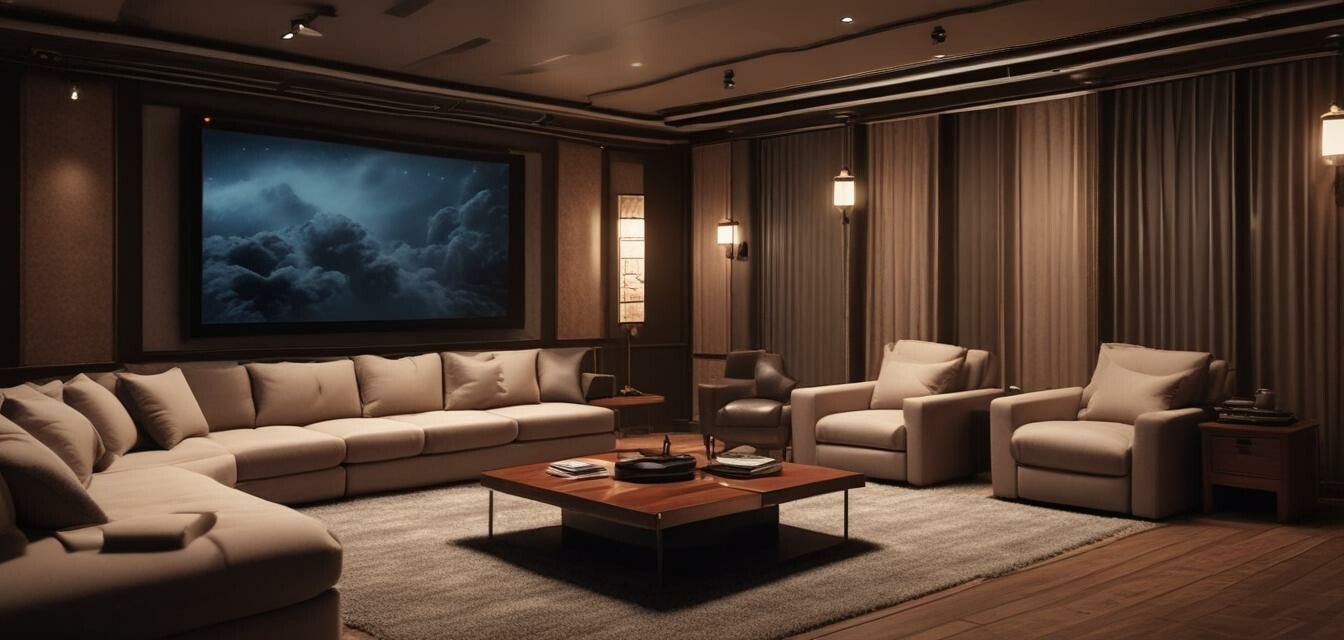
Designing a Comfortable Home Theater Layout
Key Takeaways
- Choosing the right room is essential for sound and visual quality.
- Proper seating arrangement can enhance the viewing experience.
- Speaker placement plays a crucial role in audio performance.
- Lighting control is key to an immersive experience.
- Acoustic treatments can significantly improve sound quality.
Designing a comfortable home theater layout can greatly enhance your viewing and listening experience. Whether you're a movie buff or an avid gamer, having the right setup can make all the difference. In this article, we'll provide tips for creating an optimal home theater setup, covering everything from room selection to seating arrangements and acoustic treatments.
Choosing the Right Room
The first step to designing a comfortable home theater is selecting the right room. Here are some factors to consider:
- Size: Larger rooms can accommodate bigger screens and more seating, but smaller spaces can create a cozier atmosphere.
- Shape: Rectangular rooms are generally better for optimal viewing angles than square rooms.
- Soundproofing: A room with solid walls can help contain sound and improve acoustic performance.
- Light Control: Look for rooms with minimal natural light, or consider blackout curtains for better control.
Seating Arrangements
Comfortable seating is vital for enjoyable long hours of movie watching. Here are some considerations for arranging your seats:
| Seating Types | Benefits |
|---|---|
| Recliners | Provide comfort and can enhance the viewing angle. |
| Sectional Sofas | Perfect for larger groups, allowing ample space for everyone. |
| Home Theater Seats | Sofa-like seating with built-in cup holders and reclining features. |
Optimal Seating Layout
Arranging your seating is crucial for comfort and visibility. Follow these tips:
- Place the main seating area at least 1.5 to 2.5 times the screen size away from the display.
- Consider tiered seating for better sightlines if your space allows.
- Ensure that each seat has a clear view of the screen.
Speaker Placement
To achieve the best audio experience, strategic speaker placement is key. Here's how to maximize sound:
Tips for Speaker Placement
- Place front speakers at ear level, ideally 22 to 30 degrees from the center seat.
- Position the subwoofer in a corner for optimal bass response.
- Utilize in-ceiling speakers for a clean look without compromising sound.
Lighting Control
Lighting plays a critical role in home theaters. Here’s what to consider:
- Incorporate dimmable lights for adjustable ambiance.
- Use strip lighting around the screen for a modern touch without glare.
- Consider blackout curtains to eliminate outside light during daytime viewing.
Acoustic Treatments
To cinch the acoustic performance, include appropriate treatments. Some options include:
| Treatment Type | Purpose |
|---|---|
| Acoustic Panels | Minimize sound reflection and improve overall clarity. |
| Bass Traps | Control low-frequency sounds to avoid muddiness. |
| Diffusers | Scatter sound waves for a balanced audio experience. |
Conclusion
By carefully planning your home theater layout, you can create a visually stunning and acoustically balanced environment. From selecting the right room to perfecting the seating arrangement and optimizing sound, every detail counts to elevate your viewing experience. For more tips on how to optimize your home theater setup, visit our Setup Tips category!
Pros
- Enhanced viewing experience with optimal layout.
- Improved sound quality with proper acoustic treatments.
- Customizable setup based on personal preferences.
Cons
- Initial investment for high-quality equipment and treatments.
- Time-consuming setup process.
- Requires ongoing adjustments for optimal performance.

